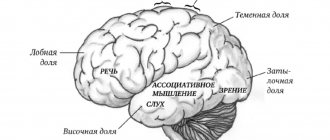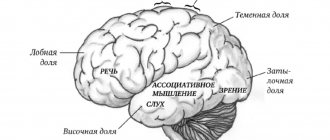20.1. Interpersonal perception and understanding
To structure the numerous results of research on interpersonal interaction, a systematic approach is used, the elements of which are the subject, object and process of interpersonal interaction (Fig. 20-1).In terms of content, three main tasks of interpersonal interaction are considered: interpersonal perception and understanding of a person, the formation of interpersonal relationships and the provision of psychological influence.
The concept of “person's perception by person” is not enough to fully understand people. Subsequently, the concept of “understanding a person” was added to it, which involves connecting other cognitive processes to the process of human perception. The effectiveness of perception is associated with socio-psychological observation - a personality trait that allows it to capture subtle, but essential for his understanding, features in a person’s behavior.
The characteristics of the perceiver depend on gender, age, nationality, temperament, state of health, attitudes, communication experience, professional and personal characteristics, etc. Women, compared to men, more accurately identify emotional states and interpersonal relationships of people. With age, emotional states are more easily differentiated. A person perceives the world around him through the prism of his national way of life. Those people who have a higher level of social intelligence are more successful in identifying various mental states and interpersonal relationships.
The object of knowledge is both the physical and social appearance of a person. During perception, the initial physical appearance is recorded, which includes anatomical, physiological, functional and paralinguistic characteristics. Anatomical (somatic) features include height, head, arms, etc. Physiological features include breathing, circulation, sweating, etc. Functional features include posture, posture, and gait. Paralinguistic (non-verbal) communication features include facial expressions, gestures and body movements. Clear emotions are easy to differentiate, but mixed and weakly expressed mental states are much more difficult to recognize (Fig. 20-2).
Social appearance presupposes the social design of appearance, speech, extralinguistic, proxemic and activity characteristics. Social appearance (appearance) includes a person’s clothing, shoes, jewelry and other accessories. Proxemic features of communication refer to the distance between the communicators and their relative position. An example from fiction that demonstrates the ability to determine place of birth and profession based on speech characteristics is phonetics professor Higgins from B. Shaw’s play “Pygmalion.” Extralinguistic features of speech presuppose the originality of the voice, timbre, pitch, etc. When perceiving a person, social features, in comparison with the physical appearance, are the most informative.
The process of human cognition includes mechanisms that distort ideas about what is perceived, mechanisms of interpersonal cognition, feedback from the object and the conditions in which perception occurs. Mechanisms that distort the emerging image of what is perceived limit the possibility of objective knowledge of people. The most significant of them are: the mechanism of primacy, or novelty (reduces to the fact that the first impression of what is perceived influences the subsequent formation of the image of the cognizable object); projection mechanism (transfer to people of the mental characteristics of the perceivers); the mechanism of stereotyping (attributing the perceived person to one of the types of people known to the subject); the mechanism of ethnocentrism (passing all information through a filter associated with the ethnic lifestyle of the perceiver).
To perceive a person and understand him, the subject unconsciously chooses various mechanisms of interpersonal cognition. The main mechanism is the interpretation (correlation) of personal experience of knowing people in general with the perception of a given person. The identification mechanism in interpersonal cognition represents the identification of oneself with another person. The subject also uses the mechanism of causal attribution (attributing to the perceived certain motives and reasons that explain his actions and other characteristics). The mechanism of reflection of another person in interpersonal cognition includes the subject’s awareness of how he is perceived by the object. In interpersonal perception and understanding of an object, there is a fairly strict order of functioning of the mechanisms of interpersonal cognition (from simple to complex).
In the course of interpersonal cognition, the subject takes into account information coming to him through various sensory channels, indicating a change in the state of the communication partner. Feedback from the object of perception performs an informative and corrective function for the subject in the process of perceiving the object.
The conditions for the perception of a person by a person include situations, time and place of communication. Reducing the time when perceiving an object reduces the ability of the perceiver to obtain sufficient information about it. With prolonged and close contact, evaluators begin to show condescension and favoritism (from the Latin favor
- favor).
Page 34 of 42Interpersonal understanding and mutual understanding: definition of concepts
Understanding is a necessary component of human cognition. In modern psychological literature there are two main terms to denote the phenomenon under discussion: “interpersonal understanding” and “mutual understanding”. According to G.M. Andreeva, mutual understanding between people in communication can be interpreted in two ways: either as an understanding of the goals, motives, personal traits of partners, or as not only understanding, but also acceptance of them, entailing the establishment of relationships of intimacy, friendship, etc. The study of mutual understanding in the first meaning is carried out in terms of analyzing the interactions of participants in joint activities, and mutual understanding in the second meaning - in terms of the so-called attraction. Attraction (lat.) – attraction.
In interaction, a person’s relationship to another person as a subject who has his own inner world is realized. The need for psychological analysis of this aspect of communication is emphasized by G.M. Kuchinsky: “The interaction of a person with a person in the process of communication is also the interaction of their inner worlds: the exchange of thoughts, ideas, images, the influence on goals and needs, the impact on the assessments of another person, his emotional states. The more complex the subject-subject interaction, the deeper should be the penetration into the partner’s inner world (including with his help) and the more perfect the reflection of his inner world.”
However, in the process of communication, not only subject-subject interactions arise, but also subject-object-subject interactions. When communicating, people usually discuss something. The topic of communication (or the subject of joint activity) turns out to be the object that mediates the partners’ understanding of each other’s personal qualities and aspirations. Communication is rarely pointless: even in cases where there is no obvious thematic focus, the psychological characteristics of their personality and worldview become the verbal or nonverbal object of interaction between partners.
Our interest in the personality of another person usually does not manifest itself in one specific situation. The motivation of interest is more stable in nature: it is realized in various life situations, and therefore we can say that such motivation is situationally independent. It is in relation to such cases that it is appropriate to use the term “interpersonal understanding”. The latter is formed in different situations over a long period of time. For example, interpersonal understanding, rather than mutual understanding, is discussed in studies of teacher-student and student-teacher understanding. Further, we will adhere to this definition of interpersonal understanding: “Understanding another should mean, although always partial, an understanding of his thoughts and the world of feelings, tracing the motives of actions and explaining value ideas.”
Unlike interpersonal understanding, mutual understanding is subject-specific and has a pronounced situational nature. In the interpersonal understanding, the subject-subject components of interaction are most clearly represented, and the object component of communication appears to be relegated to the background, invisible during a superficial analysis. It is appropriate to talk about mutual understanding in relation to situations of clearly expressed subject-object-subject interaction. Mutual understanding or misunderstanding between people in communication usually arises on specific issues. Thus, the president of one nuclear power can say about the president of another that they have complete mutual understanding on disarmament issues.
Mutual understanding in thematically oriented communication or joint activity includes two closely intertwined and interdependent forms: mutual understanding as the coordination of individual understandings of the object of work (subject of communication) and as an understanding of the personal characteristics of partners. In order to clearly understand the psychological composition of both forms of understanding, the researcher must analyze the intellectual components of the subject’s mental activity, aimed at extracting objective content from interaction with an object, as well as at coordinating knowledge about it with the knowledge of other participants in communication. At the same time, the psychologist needs to study the empathy and evaluative components associated with the formation of an attitude towards an object and attitude towards partners. Empathy is the ability to respond emotionally to the experiences of other people.
We will use the concept of “mutual understanding” to denote the result of communication between people discussing specific issues. In other words, for cases where the “naked eye” can see how the understanding of the personal qualities of partners is mediated by their understanding of the subject of communication. The term “interpersonal understanding” will characterize the results of a longer, situationally generalized interaction between people (such as the understanding of parents of their child, a scientist of a colleague, a boss of a subordinate, etc.).
The history of the development of scientific ideas about interpersonal understanding can be traced in psychological studies of human cognition by humans.
<< Previous — Next >>
| Scientific directions in the study of understanding |
| Understanding as interpretation |
| Understanding as the inclusion of new knowledge into the past experience of the subject |
| Understanding as the ability to make inferences |
| Semantic aspects of understanding |
| Natural Language Understanding |
| Mutual understanding is a necessary condition for communication |
| The problem of understanding in experimental psychology |
| The problem of understanding in classical philosophy and modern theory of knowledge |
| The concept of ought |
| Two lines of study of the problem of understanding |
| The place of understanding in the dialectic of relations between cognition and thinking |
| Understanding in the methodology of science |
| Understanding is one of the factors regulating scientific research |
| Understanding in cognition and communication |
| Computer modeling of forms of understanding and the use of “understanding systems” in scientific research |
| Understanding-recognition |
| Understanding-remembering |
| Understanding-hypothesis |
| Understanding-unification |
| Understanding-explanation |
| Knowledge and understanding in mental activity |
| Think, know and understand |
| Knowledge as a prerequisite and psychological basis of understanding |
| Understanding as a problem in the psychology of thinking |
| Similarities and differences in the concepts of “thinking” and “understanding” |
| Forms of understanding the object of knowledge |
| Understanding-recognition |
| Understanding-hypothesis |
| Main conclusions about the place and role of understanding in the psychology of thinking |
| Understanding as a process of setting and solving a mental problem |
| Interpersonal understanding and mutual understanding: definition of concepts |
| The problem of interpersonal understanding in studies of human cognition by humans |
| Psychological stereotypes of understanding personality |
| Cognitive and personal components of stereotypes of understanding the personality of participants in the war in Afghanistan |
| Studying the ideas of Russian citizens about the personality of a typical participant in the war in Afghanistan |
| Personal determinants of the formation of stereotypes of understanding “Afghans” |
| The influence of communication on stereotypes of understanding “Afghans” |
| Level of education and personality assessment of war participants |
| Age differences in assessment |
| All pages |
Social perception: effects, phenomena and types
It is worth examining a narrower area of this concept. Social perception is a process of cognition that is achieved by creating an idea of oneself and other members of society. In short, it is a way for an individual to understand himself. The concept of social perception was proposed in 1947 by J. Bruner.
It is customary to distinguish the following effects of social perception:
- stereotyping - a formed image, a stamp.
- halo - the general opinion about an individual is transferred to the hidden traits of his character. If a person has unique natural characteristics, society will consider him good.
- novelty - the formation of an opinion about a stranger occurs on the basis of the first impression. This opinion is often wrong because the first impression is based on many factors that do not reflect internal qualities.
- primacy - when creating an image, the emphasis is on the information that was learned first. All subsequent experience is formed based on it.
- role – the perception of role functions as character traits. For example, all teachers are usually perceived as strict.
- presence – in the presence of other people, a person tends to demonstrate the skill that he or she masters best.
- advance - attributing to a person traits that are not characteristic of her and further disappointment in her. This is due to the so-called faith in people; I want to think that they are all good.
- condescension – exaggerating the role of positive qualities while denying negative character traits.
- hyper-demanding – a person sees only negative qualities and turns a blind eye to positive ones.
- physiognomic reduction - a judgment about qualities based on appearance.
- beauty – attractive people are attributed more positive qualities.
- expectation – provoking in a person the reaction that we want to get from him.
- In-group favoritism is always better.
- presumption of reciprocity - the individual thinks that the opponent treats him the same way as he treats him.
- projection - consists of a person attributing his positive qualities to a person who is pleasant and attractive to him.
Phenomena of social perception:
- assumptions about similarity - the person believes that “their” people should treat everything the same way as she does. The need for community is deeply embedded in us; we want those close to us to be like us, to think like us.
- ignoring the information value of what did not happen - it is customary to ignore information about what could have happened, but in reality did not happen. This is why it is so difficult to learn from other people's mistakes.
The following types of social perception are distinguished:
- An individual of himself, his own or another group.
- Members of each other's group or members of another group.
- A group of your own people and members of another group.
- A group of another group.
To understand the essence of social perception, let's first get acquainted with its components. The mechanisms of social perception are presented as follows:
- Social stereotyping is the formation of an opinion about a person, which is based on his membership in a certain group. Let's take a well-known stereotype as an example: all Ukrainians drink gorka. Thus, when a person meets a Ukrainian, she has a stamp about his qualities.
- Identification is the recognition of an object through the analysis of some known features. For example, having met a person in a school mathematics classroom, you can draw the following conclusions about him: he is a mathematics teacher or studies this subject.
- Empathy is the ability to understand a person, his internal state. We are more willing to sympathize with someone whose emotions and experiences are close to us.
- Attraction is the knowledge of another through the formation of a positive feeling for him. In the process of falling in love, you can recognize your partner and at the same time see only positive qualities in him.
- Reflection is a process of self-knowledge by rethinking one’s qualities.
- Causal attribution is the creation of an image through the actions and emotions of another person. From childhood, our parents teach us that if a person does bad things, he is evil.
Pedagogical social perception
Perception in pedagogy is a cognitive process that forms a subjective picture of the world. This is an important aspect of cognition, because moral standards are laid down in childhood. At school, the child is in society, learns to communicate, and analyze the behavior of peers. One of the aspects of pedagogical perception is attitudes.
Social pedagogical attitude is the teacher's assessment and reaction in a certain way to students or learning situations that have been formed on the basis of past experience. They can be positive or negative.
Positive pedagogical attitudes can have a beneficial effect on the learning process. Students see that the teacher trusts them and believes in them. This encourages them to study better, develop creativity and be disciplined.
In this case, the “Pygmalion effect” applies. This is an ancient Greek sculptor who created a beautiful statue of a girl. She was so beautiful that he fell in love with her. His love was so strong that it could bring the statue to life. In the same way, a teacher can inspire in students a desire to develop and become better.
Communication as social perception
Perception in communication is the exchange of information during interaction with other members of society. Most often this happens in the form of dialogue, the goal of which is to achieve complete mutual understanding.
Perceptual communication is one of the ways to build interpersonal relationships, based on the ability to understand the inner world of the interlocutor. Perceptual communication carries the following set of functions:
- creating a soil that will allow you to better understand other people;
- development of prerequisites for good mutual understanding with the opponent;
- ensuring that the influence of interlocutors on each other is positive. .










